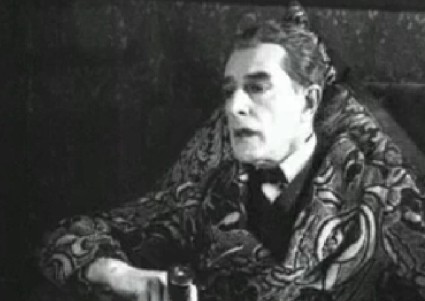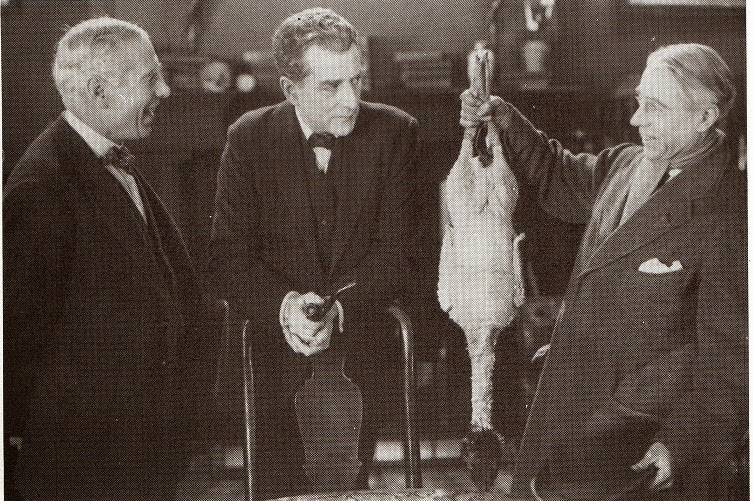In these days of Sherlock the sociopath (UK) and a female Doctor Watson (USA) it’s hard to imagine the impact of the original stories on contemporary audiences. This film was the first feature produced as part of the Stoll series and was well received by Arthur Conan Doyle who was still writing his character at the time – this was six years before his last The Adventures of Shoscombe Old Place.
It seems that Doyle was particularly impressed with Eille Norwood who played his master detective. A vastly-experienced stage actor, Norwood so impressed the author with his obsessive attempts to bring every detail of Holmes to light that he gushed about his “brooding eye” and his “rare quality, which can only be described as glamour, which compels you to watch an actor eagerly even when he is doing nothing.”
.jpg) |
| First edition Hound from 1902 |
This was the first in the series of screenings at the Barbican timed to coincide with an exhibition on the great detective at the nearby Museum of London. It featured Mr Neil Brand on piano who gave his all with full-on polychromatic flourishes that spiced up the action with dynamic chords of which Bernard Hermann would have been proud.
 |
| McDougall, Norwood, Raynham and Willis |
Eille Norwood’s Sherlock Holmes is possibly more understated than I expected but this too is a factor of the production context: he’d honed his character over the previous 15 shorts in 1921 and, by now, was both well known as and well used to his detective. You have to view his performance in the context of the broader series and thankfully we have three shorts and another feature to go.
 |
| Eille Norwood |
Dr. Watson is played by Hubert Willis who was in all of the series save the last film following his untimely passing. He is a dogged (pun intended and there may be more…) and brave companion and is sent by Holmes to investigate the characters in and around Baskerville Hall following the suspicious death of Sir Charles Baskerville and to help protect the inheritor of the title, Henry Baskerville (Rex McDougall) an almost overlooked relative of Sir Henry returned from the United States.
 |
| Hubert Willis and Eille Norwood on another case... |
Watson observes the rather suspicious family butler, Barrymore (a splendidly wide-eyed comic turn from Fred Raynham) as well as the brother and sister from the neighbouring mansions, Roger Stapleton (Lewis Gilbert) and his nervy sister, Beryl (Catina Campbell). To be honest, a large number of people are behaving suspiciously, suspicious…
We see the dog rampaging across the moors, head seemingly engulfed in supernatural flames whilst the mystery deepens when an escaped convict is known to be nearby and a mysterious figure is seen pacing the moors in the midnight hours…
 |
| Did the butler actually do it? |
The Hound of the Baskervilles is an, all too rare, example of popular early 20’s British film and one based on great indigenous fiction. This is the stuff our great grand-parents lapped up (pun etc…) in their rare time and we’re not so different today as the success of the Sherlocks continues world-wide.
The film is also pretty hard to see and given that the print used was in such good quality, surely it’s ripe for the box-set treatment? Maurice Elvey presents Eille Norwood as Sherlock Holmes... it has a ring doesn’t it?
In the meantime,there is a DVD-R with three of the shorts available from Amazon.com - The Man With The Twisted Lip (1921), The Dying Detective (1921) and The Devils Foot (1921).













No comments:
Post a Comment